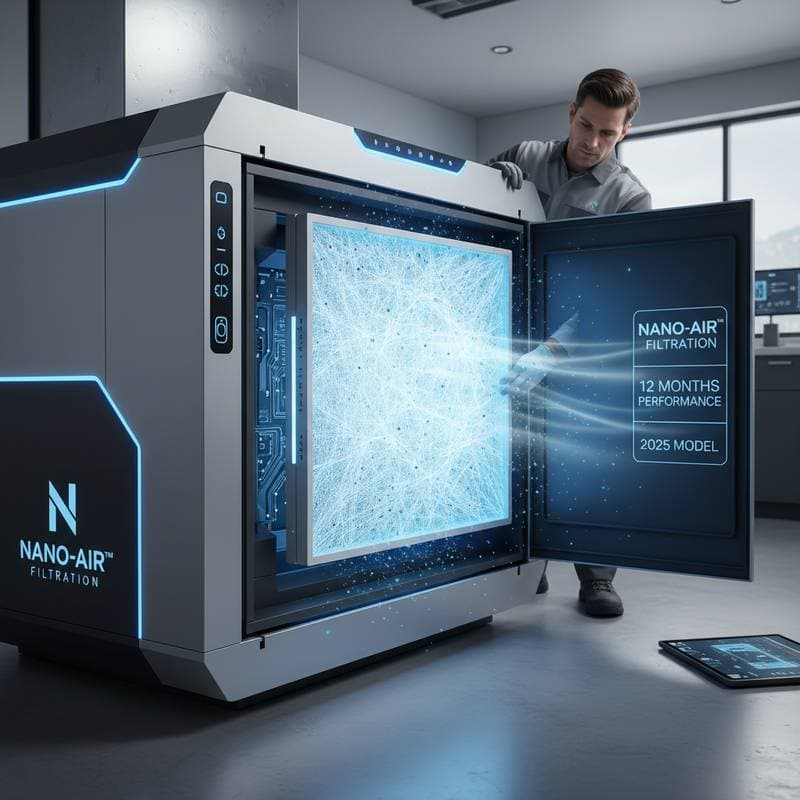The Science of UV-C Purification for Airborne Virus Control in 2025
UV-C air purifiers stand out as a leading solution for enhancing indoor air quality. These devices employ ultraviolet-C light to target and neutralize airborne pathogens, such as viruses, bacteria, and mold spores. Independent studies demonstrate that UV-C systems can eliminate up to 89% of viruses circulating in indoor air, providing a robust defense for homes and commercial spaces. This section delves into the mechanics of UV-C technology, its proven efficacy, and the elements that optimize its results.
The Mechanism Behind UV-C Virus Neutralization
UV-C light operates within the ultraviolet spectrum at wavelengths from 200 to 280 nanometers. This specific range possesses the energy required to breach the outer layers of microorganisms. Upon exposure, the light alters the DNA and RNA within viruses and bacteria, rendering them incapable of replication or infection.
In practical applications, UV-C purifiers integrate into heating, ventilation, and air conditioning systems or function as independent units. Air passing through the purifier encounters the UV-C source, where pathogens receive a lethal dose of radiation. Unlike chemical treatments, this method avoids the generation of ozone, ensuring safer operation in occupied spaces.
Factors Driving the 89% Virus Elimination Rate
The 89% effectiveness figure emerges from rigorous laboratory evaluations of UV-C systems under simulated indoor conditions. This rate reflects the proportion of airborne viruses inactivated after passing through the purifier. Achievement of this level hinges on precise engineering and operational variables.
Exposure duration plays a critical role; extended contact with UV-C light heightens the damage to microbial structures. Lamp intensity, measured in watts and output strength, determines the radiation dose delivered per unit of air. Airflow velocity influences dwell time within the UV field—slower rates permit thorough treatment. System architecture, including lamp positioning and reflective surfaces, maximizes light distribution to ensure comprehensive coverage.
When these components align, UV-C purifiers approach 90% reduction in viral presence, positioning them as a superior alternative to filtration alone for pathogen control.
Additional Advantages of UV-C Systems for Indoor Air Management
Virus neutralization represents only one facet of UV-C benefits. These systems also prevent microbial accumulation on essential HVAC elements, such as evaporator coils and drain pans. Cleaner surfaces resist biofilm formation, which otherwise harbors bacteria and fungi.
By maintaining coil efficiency, UV-C enhances overall airflow, reducing strain on blowers and fans. Homeowners experience fewer service calls, as components endure longer without heavy contamination. Energy savings follow naturally; unobstructed systems consume less power to achieve desired temperatures, lowering utility bills over time.
In environments with high occupancy, like offices or schools, these improvements foster consistent air quality, minimizing allergy triggers and respiratory irritants.
Optimizing UV-C Performance Through Key Considerations
Sustained high performance requires attention to installation and upkeep details. UV-C lamps degrade gradually, with output diminishing after 9,000 hours of use; timely replacement restores full potency. Placement matters immensely—position lamps close to high-traffic air paths, such as return ducts, to intercept contaminants early.
Environmental factors can impact efficacy. Accumulated dust on bulbs scatters light, while high humidity may shield some microbes. Temperature fluctuations affect lamp longevity, so systems in extreme climates benefit from protective enclosures. Sizing the purifier to match HVAC capacity prevents overload and ensures even treatment across all zones.
Professional assessment during installation tailors the setup to specific building layouts, accounting for room sizes and ventilation patterns.
Maintenance Practices for Long-Term UV-C Effectiveness
Daily reliability stems from routine care protocols. Inspect reflectors quarterly to remove debris that could absorb light. Use diagnostic tools to measure lamp irradiance, confirming output remains above threshold levels. Adhere to manufacturer schedules for bulb swaps, typically every 12 to 18 months depending on usage.
Pairing UV-C with complementary technologies amplifies results. High-efficiency particulate air filters trap larger debris before it reaches the light source, preserving bulb clarity. Bipolar ionization units can address odors and volatile compounds that UV-C overlooks.
Through these steps, systems uphold the 89% virus elimination benchmark year-round, adapting to seasonal demands like flu peaks.
Implementing UV-C for Enhanced Indoor Health
Incorporating UV-C purification elevates indoor environments by targeting invisible threats at their source. Homeowners gain peace of mind knowing air circulates free from a significant portion of viral risks. Businesses benefit from reduced absenteeism linked to illness transmission.
Consult certified technicians to evaluate compatibility with existing HVAC infrastructure. Upgrades often qualify for energy rebates, offsetting initial costs. The result is a proactive approach to air quality that supports wellness and operational efficiency.





